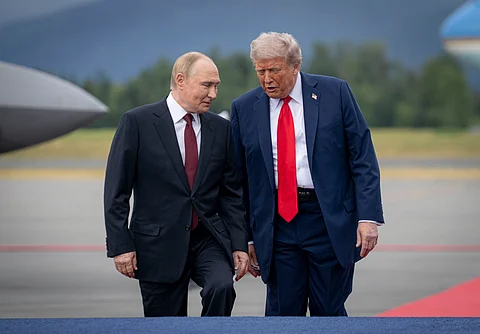

U.S. President Donald Trump has shifted focus from a temporary ceasefire to a comprehensive peace agreement in the Ukraine-Russia conflict, following an inconclusive summit with Russian President Vladimir Putin in Alaska on Friday.
The three-hour meeting, the first U.S.-Russia summit since Russia’s invasion of Ukraine in February 2022, failed to secure a ceasefire, prompting Trump to engage Ukrainian President Volodymyr Zelensky and European leaders in follow-up discussions.
Trump emphasized that a lasting peace deal is preferable to a ceasefire, which he believes is unlikely to hold.
Trump’s hour-long call with Zelensky, joined by Secretary of State Marco Rubio and special envoy Steve Witkoff, was described as challenging by Axios correspondent Barak Ravid.
European leaders, including those from the UK, France, Germany, Italy, Finland, Poland, NATO Secretary-General Mark Rutte, and European Commission President Ursula von der Leyen, later joined for an additional 30 minutes.
Trump insisted that “a fast peace deal is better than a ceasefire,” a stance he reiterated on Truth Social, stating, “It was determined by all that the best way to end the horrific war between Russia and Ukraine is to go directly to a Peace Agreement.”
Zelensky, who will meet Trump in Washington on Monday to discuss the summit’s outcomes, expressed support for a trilateral meeting involving Ukraine, the U.S., and Russia.
European leaders welcomed Trump’s diplomatic efforts but stressed the need for robust security guarantees for Ukraine to protect its sovereignty.
They also vowed to intensify sanctions on Russia, with British Prime Minister Keir Starmer noting that until Putin halts his “barbaric assault,” pressure on Russia’s war machine will increase.
However, some European commentators, like German ex-ambassador Wolfgang Ischinger, criticized the summit’s lack of progress, calling it a diplomatic win for Putin.